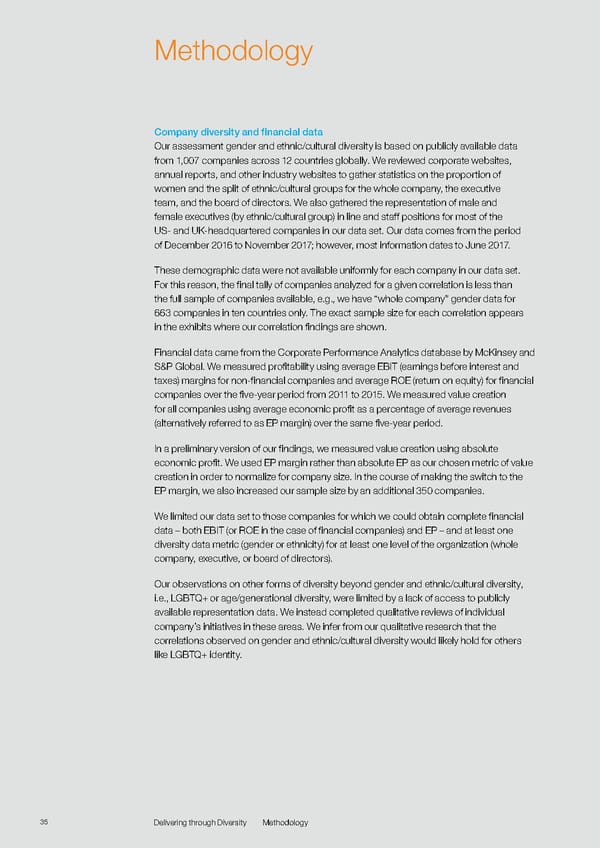en Methodology Company diversity and financial data Our assessment gender and ethnic/cultural diversity is based on publicly available data from 1,007 companies across 12 countries globally. We reviewed corporate websites, annual reports, and other industry websites to gather statistics on the proportion of women and the split of ethnic/cultural groups for the whole company, the executive team, and the board of directors. We also gathered the representation of male and female executives (by ethnic/cultural group) in line and staff positions for most of the US- and UK-headquartered companies in our data set. Our data comes from the period of December 2016 to November 2017; however, most information dates to June 2017. These demographic data were not available uniformly for each company in our data set. For this reason, the final tally of companies analyzed for a given correlation is less than the full sample of companies available, e.g., we have “whole company” gender data for 663 companies in ten countries only. The exact sample size for each correlation appears in the exhibits where our correlation findings are shown. Financial data came from the Corporate Performance Analytics database by McKinsey and S&P Global. We measured profitability using average EBIT (earnings before interest and taxes) margins for non-financial companies and average ROE (return on equity) for financial companies over the five-year period from 2011 to 2015. We measured value creation for all companies using average economic profit as a percentage of average revenues (alternatively referred to as EP margin) over the same five-year period. In a preliminary version of our findings, we measured value creation using absolute economic profit. We used EP margin rather than absolute EP as our chosen metric of value creation in order to normalize for company size. In the course of making the switch to the EP margin, we also increased our sample size by an additional 350 companies. We limited our data set to those companies for which we could obtain complete financial data – both EBIT (or ROE in the case of financial companies) and EP – and at least one diversity data metric (gender or ethnicity) for at least one level of the organization (whole company, executive, or board of directors). Our observations on other forms of diversity beyond gender and ethnic/cultural diversity, i.e., LGBTQ+ or age/generational diversity, were limited by a lack of access to publicly available representation data. We instead completed qualitative reviews of individual company’s initiatives in these areas. We infer from our qualitative research that the correlations observed on gender and ethnic/cultural diversity would likely hold for others like LGBTQ+ identity. 35 Delivering through Diversity Methodology
 Delivering Through Diversity Page 36 Page 38
Delivering Through Diversity Page 36 Page 38